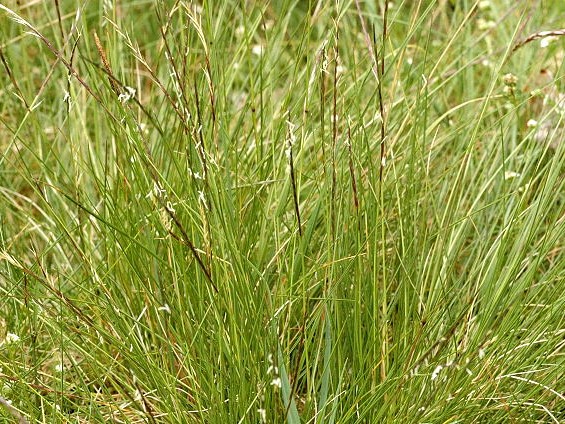Created by: Ramona Robison
Created on: Monday, Aug 8th, 2016
Created on: Monday, Aug 8th, 2016
Yes or No:
Yes
Points:
1
Confidence Level:
High
Answer / Justification:
Nardus stricta is naturalized in Michigan, New York, New Hampshire, Massachusetts, Oregon, Idaho and New Zealand. It is not yet reported in California.
Reference(s):
Yes or No:
Yes
Points:
2
Confidence Level:
High
Answer / Justification:
Nardus stricta is naturalized in Michigan, New York, New Hampshire, Massachusetts, Oregon, Idaho and New Zealand. It is not yet reported in California. The naturalized distribution matches California in Oregon, Idaho and parts of New Zealand.
Reference(s):
Yes or No:
Yes
Points:
2
Confidence Level:
High
Answer / Justification:
N. stricta is considered invasive in New Zealand. It is also a noxious weed in Oregon and Idaho.
Reference(s):
Yes or No:
Yes
Points:
3
Confidence Level:
High
Answer / Justification:
N. stricta is considered invasive in New Zealand and some of the locations there match California's climate.
Reference(s):
Yes or No:
No
Points:
0
Confidence Level:
Very High
Answer / Justification:
Nardus is a monotypic genus.
Reference(s):
Yes or No:
No
Points:
0
Confidence Level:
Medium
Answer / Justification:
Although there are areas where N. stricta occurs which match California, it is also found in much colder regions.
Reference(s):
Yes or No:
Yes
Points:
1
Confidence Level:
High
Answer / Justification:
Once established it can exclude smaller species due to its growth form, which allows the plant to suppress surrounding vegetation. Its potential to dominate extensive areas is well known from Europe.
Reference(s):
Yes or No:
No
Points:
0
Confidence Level:
Medium
Answer / Justification:
There is no information on whether Nardus promotes or changes fire regime. Due to its low stature and habitat preference it would not be likely to do so.
Reference(s):
Yes or No:
Yes
Points:
1
Confidence Level:
High
Answer / Justification:
N. stricta is able to invade grazing systems because it is less palatable than other grasses. It is also able to reproduce and spread by apomictic seed production.
Reference(s):
Yes or No:
No
Points:
0
Confidence Level:
High
Answer / Justification:
Nardus stricta is a wiry, 10 - 40 (-60) cm tall and densely tufted perennial tussock grass with tillers closely packed on laterally branching rhizomes. Since it is low-growing it would not impede movement of animals, livestock or humans.
Reference(s):
Yes or No:
Yes
Points:
1
Confidence Level:
High
Answer / Justification:
It reproduces mostly through transport of tufts in mud clinging to the hooves of grazing animals. Nardus can also regenerate from detached pieces of rhizome, but does not form stolons.
Reference(s):
Yes or No:
Yes
Points:
1
Confidence Level:
High
Answer / Justification:
It reproduces mostly through transport of tufts in mud clinging to the hooves of grazing animals.
Reference(s):
Yes or No:
Yes
Points:
1
Confidence Level:
High
Answer / Justification:
Tiny spikelets can produce 1000 seeds during each blooming.
Reference(s):
Yes or No:
Yes
Points:
1
Confidence Level:
High
Answer / Justification:
Tiny spikelets can produce 1000 seeds during each blooming.
Reference(s):
Yes or No:
Yes
Points:
1
Confidence Level:
High
Answer / Justification:
In a study of N. stricta germination, tests of different treatments showed germination percentages from 31 to 90%.
Reference(s):
Yes or No:
Points:
0
Confidence Level:
Answer / Justification:
The studies available do not indicate how long it takes Nardus to reach reproductive maturity. In the available seed study researchers collected mature plants from the field and used those to compare seed production.
Reference(s):
Yes or No:
No
Points:
0
Confidence Level:
Medium
Answer / Justification:
Nardus flowers from June until August.
Reference(s):
Yes or No:
Yes
Points:
1
Confidence Level:
High
Answer / Justification:
N. stricta is most likely to invade low stature vegetation on acid soils, e.g. cushion communities or ephemeral wetlands, and invasion is probably assisted by grazing (Kissling 2004). It reproduces mostly through transport of tufts in mud clinging to the hooves of grazing animals. Seed dispersal on and in the wool of sheep, as reported for a range of other plant species could be an effective mode of transport for Nardus seeds in New Zealand (Kissling 2005).
Reference(s):
Yes or No:
No
Points:
0
Confidence Level:
Medium
Answer / Justification:
N. stricta is mainly dispersed by cattle or contaminated seed.
Reference(s):
Yes or No:
Yes
Points:
1
Confidence Level:
Medium
Answer / Justification:
It is hypothesized that N. stricta was first introduced into New Zealand in mixtures of European pasture grasses, which were imported to provide forage for dairy cattle.
Reference(s):
Invasive Plant Atlas: http://www.invasiveplantatlas.org/subject.html?sub=6076
Reviewed by Chris McDonald.
- < 13 : accept (low risk of invasiveness)
- 13 - 15 : evaluate further
- > 15 : reject (high risk of invasiveness)
PRE Score:
17
Number of questions answered:
19
Screener Confidence (%):
75.8
Organization:
Evaluation visibility:
Public - accessible to all site users

